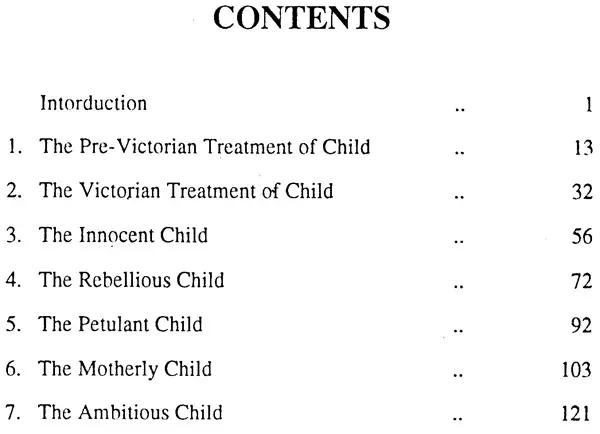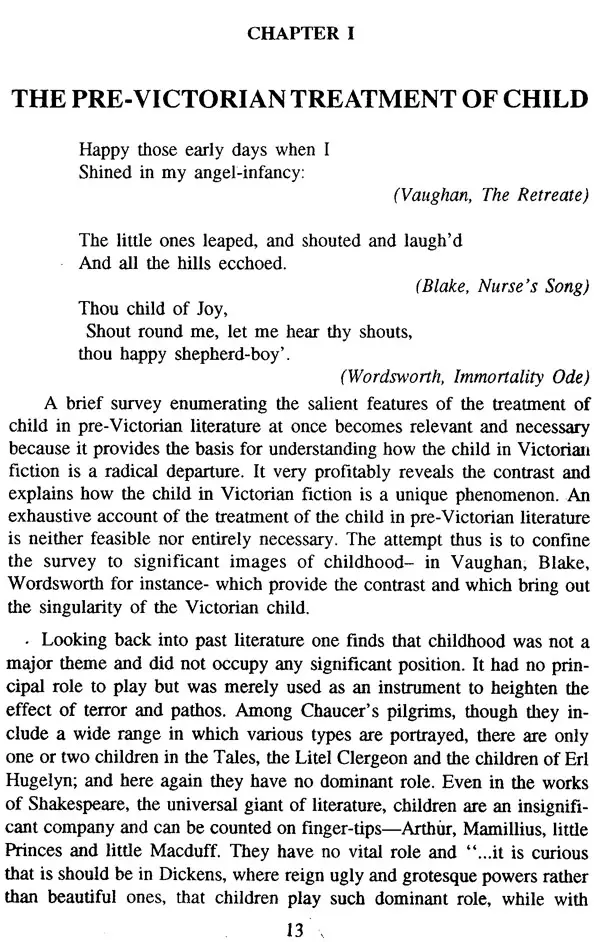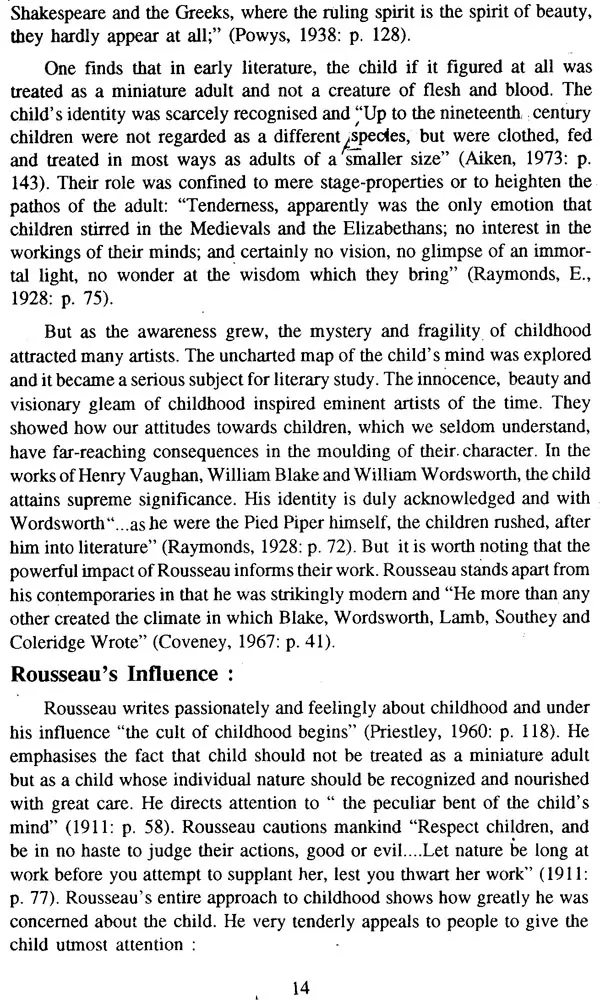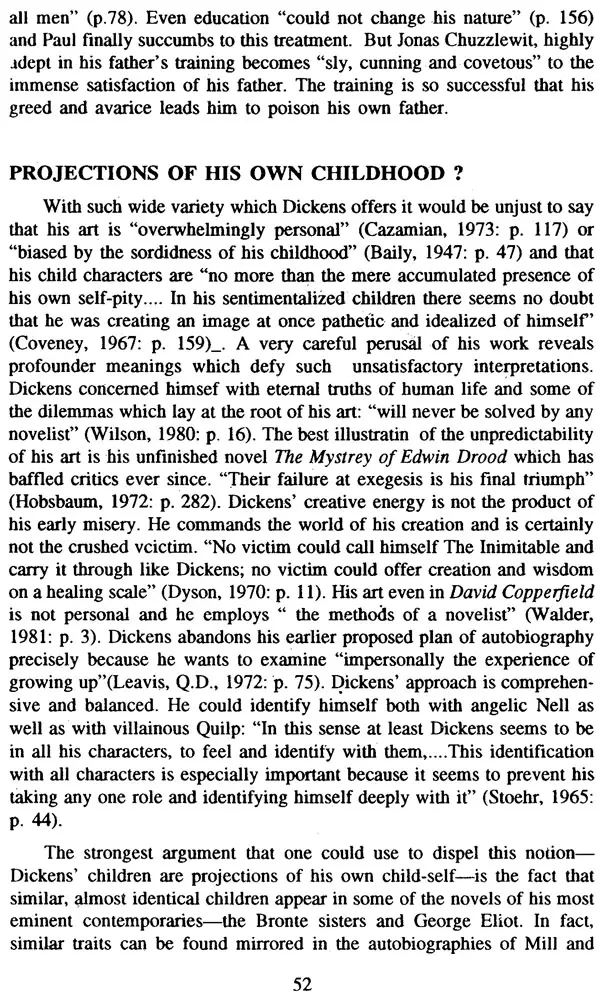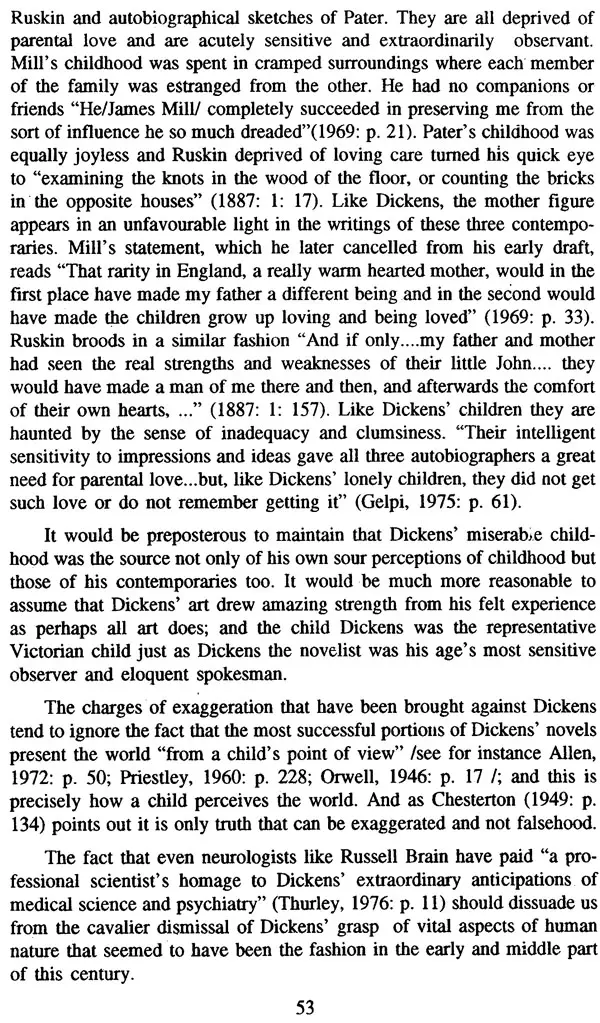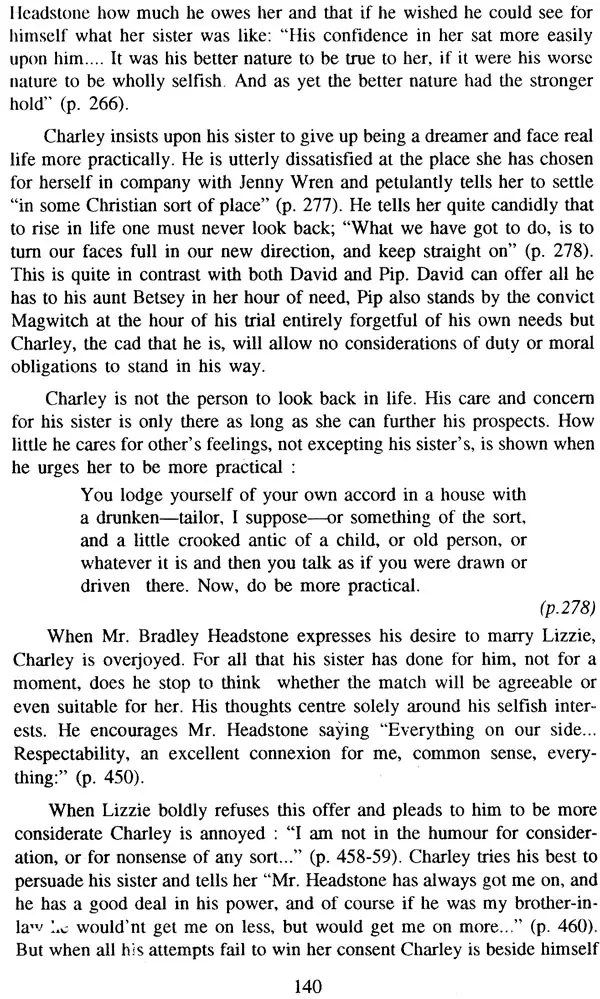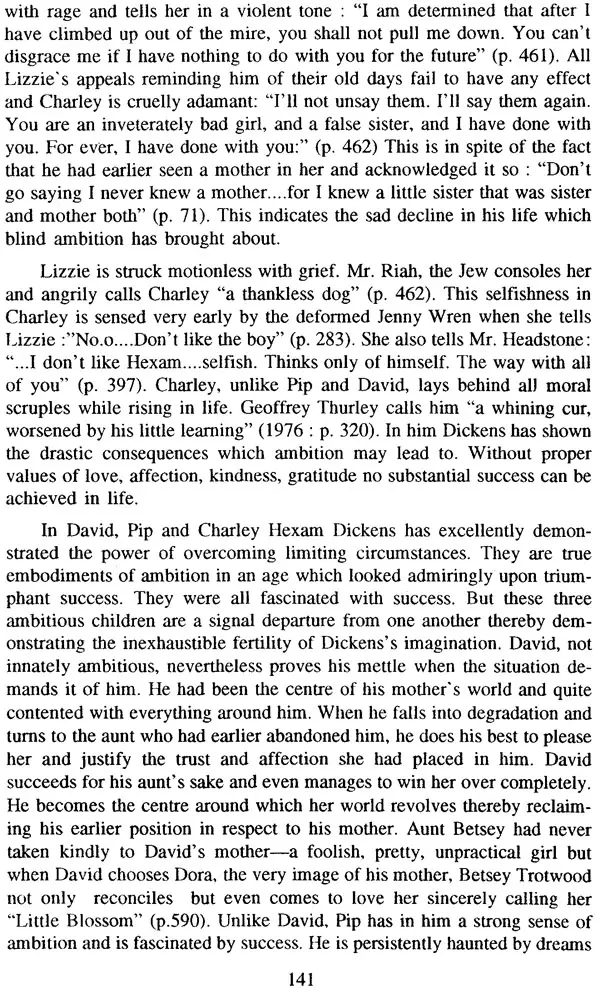About the Book This book is the culmination of three years research work on Charles Dickens and other Victorian novelists like Charlotte Bronte, Emily Bronte and George Eliot who have presented in their works significant child portraits. An attempt is made to emphasis why childhood emerged as the core theme in Victorian fiction, how it was a continuation and departure from the approach of Pre-Victorian artists-Vaughan, Blake, Wordsworth, and why Dickens needs in special reference. Against the modern readiness to dismiss his works as sentimental and exaggerated one of the first aims of this book is to establish him primarily as a creative- artist.
There is a detailed analyses of children's reactions given the major motif of misery in the Victorian scene. Various types - the innocent, the rebellious, the petulant, the motherly and ambitious children are discussed, in the hope that this will lead to better understanding and enjoyment. The books has much to offer any student embarking on a specialist course in English at a university or elsewhere.
About the Author Susmita Bhattacharya is Sr. Lecturer of English at the University of Gorakhpur. She gained her Ph.D. in English from Banaras Hindu University, Where she specialised in Victorian fiction, she has been teaching English literature for eleven years and also associated with research and writing. She has published many research papers in reputed journals and also delivered numerous lectures and papers at national conferences.
Foreword It will not perhaps be wrong to say that the true test of the health of a civilization is the kind of treatment it accords to its children. Judged from this point of view, the Victorian society presents a phenomenon of grave malaise. As a result of industrial advancement England during the nineteenth century achieved a level of economic prosperity that it had never known in the past. But the loss suffered in terms of sensibility was too heavy to be compensated by the huge pile of material wealth. Human relationships now were viewed exclusively from a utilitarian point of view. In such an environment it was only natural that children who had no productive role should have been treated with callous neglect. Neither the government nor the society appeared to be concerned about the grave injury it meant to their personality. Susmita Bhattacharya has handled this subject with commendable ability and competence. I hope scholars interested in Victorian fiction will find her work both interesting and useful.
Preface This book, I hope, will be of great help to the students of English literature. It appeared originally as a doctoral thesis submitted to the Banaras Hindu University. I begin with a brief survey showing how the children occupied a very insignificant role in the early literature. It was only under the impact of Rousseau that the pre-Victorian writers-Vaughan, Blake and Wordsworth probed into the mystery and fragility of childhood. The discussion is limited to the child images of these poets for reasons of particularity and significance. Their approach (except for Blake) is mainly visionary inspired as they were by the image of the divine child and herein lies the glaring Victorian contrast.
Childhood emerged as the core theme in Victorian fiction and eminent writers, of the age gave new inclusiveness and depth to the portrayal of the child-mind. But in the Victorian'Scene children are.portrayed as living entities. They are deprived of parental care and affection and brutally exploited by the adult world. A deep rooted sense of alienation pervades the heart of this miserable child. Dickens has been singled out as his collection is incomparably subtler than his contemporaries. But along with him some of the significant child-portraits by Charlotte Bronte, Emily Bronte and George Eliot have been considered keeping in view the pattern which emerges and completes the Victorian picture of the child.
While specially referring to Dickens, the discussion attempts to establish him primarily as a creative artist. The greatness of his genius cannot be appreciated if he is held mainly as a social reformer, or his art as personal and a product of his own childhood misery, as some critics have tried to do. When viewed in proper perspective the charges of exaggeration leveled against Dickens can also be dispelled. as here the artist is trying to capture unerringly the world as seen through the child's eye.
A wide range of children's reactions, given the major motif of misery in the Victorian scone , are explored and studied. They are the basis for determining the various types of children. A strict classification however, in human situations, is impossible. The innocent, the rebellious, the petulant, the motherly and ambitious children are discussed in separate chapters. Wherever possible, the differences within these types are revealed but all the same the pattern which underlies this crowded canvas of children is not lost sight of, Quite a few works have appeared dealing with children in the works of individual novelist or in genera] the image of childhood in literature but a systematic analysis of the Victorian child has perhaps not been attempted. Hence this book.
Introduction Children became a major point of interest in English literature only in the seventeenth century; in early literature they had a very insignificant role and presented "a very poor show in the pageant of English literature" (Raymond’s, 1928: p. 70). Even Chaucer who went for types, has portrayed no significant children among his pilgrims. In the works of the legendary giant Shakespeare, from whose universality much might have been expected, children occupy a secondary position where their role is merely confined to evoke tenderness or tears of pity. No attempt was made to probe into the child's mind. However, as the mystery , fragility, innocence of childhood baffled artists and compelled their attention, many came to advocate the child's cause and of diem Rousseau stands the foremost. Occupied as Rousseau was with the "simple, profound and permanent problems of humanity" (Murry, 1960: p. 223) he realised more than anyone else the supreme value of childhood and "was the first to view the child as a child and to stop treating the child as an adult" (Bloom, 1971: p. 14). His treatise Emile had a powerful impact and it led to epoch-making changes in as much as it resulted in elevating childhood to a position of central literary concern.
Rousseau paved the way and made it possible for Vaughan, Blake and Wordsworth to devote special attention and careful treatment to childhood. Blake agreed with Rousseau's policy of minimum interference with the child. Even Wordsworth's works bear Rousseau's imprint and one finds there "Rousseau's fundamental tenets: he has the same semi-mystical faith in the goodness of nature as well as in the excellence of child" (Legouis, 1963: p. 93). The works of these artists, replete with images of childhood are crucial for the proper understanding of the child in literature. Wordsworth believed that child is the father of man and the child's views in the soft and impressionable phase of childhood go a a long way in determining the kind of man he becomes. In his poem Rainbow Wordsworth Mows how " The child's joy at the rainbow modifies the entire way he grows up" (Prickett, 1970: p. 6). Blake, too, cautions parents of the need to pay due heed to childhood because for any error in this formative phase of life they can never make up later.
Book's Contents and Sample Pages

